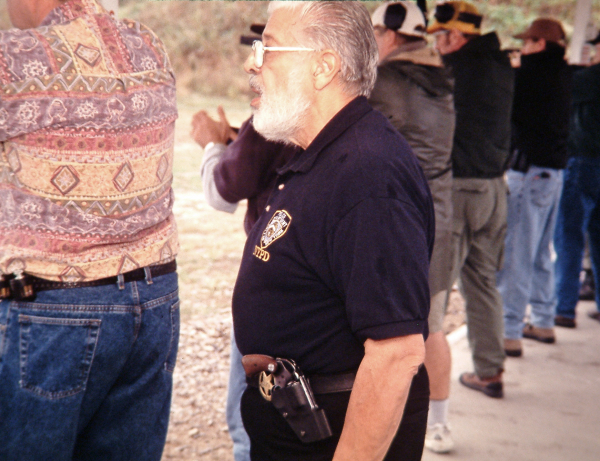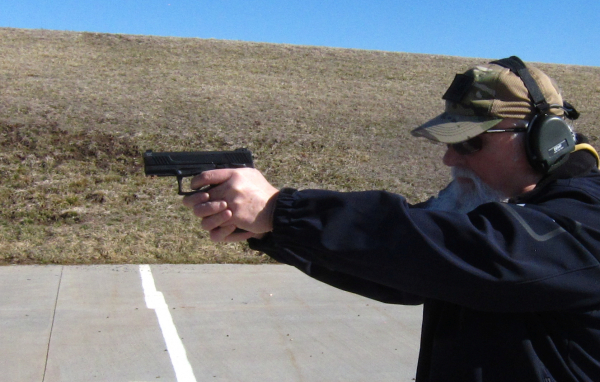Nothing gets you to thinking about your own vulnerability like finding out that someone you know is facing physical handicaps and having to adapt when considering self-defense options. I’ve recently run into associates who’ve been facing some issues – and, a few weeks back, I ran into one of my own.
Still, this is something that’s been on my mind for several years. No less an authority than Claude Werner, the Tactical Professor, wrote on the subject and he’s not alone. Stephen Wenger has mentioned it and others have made note of clients who faced handicaps that had to be worked around.
The word of the day is “accommodate.”

Back as far as the late 1990s, I became aware that Jim Cirillo had limits on shoulder rotation. Having carried strong side for years, the shoulder injury prevented that; it meant he couldn’t carry a gun in the ‘normal’ location for him. Instead of choosing to be unarmed, he had to move the gun forward and seek a different type of carry system.
He adapted to the physical issue and worked to be effective in spite of the handicap.
In the case of Massad Ayoob, when he had a fracture of a finger on his dominant hand, he suited up with a ‘weak’ side holster -- something he’d already prepared for. As retired armorer/rangemaster/instructor Mike Rafferty noted, “You have two hands and it’s a “handgun,” not a “handsgun.””
I was recently reading a blog post from Steve Moses. He was discussing a surgical intervention on his wrist. His focus was on different guns in lighter calibers, something for most folks to consider if they seek to live on into their elderly years. A take on Claude Werner’s “old man gun” discussion, it’s a path I’d already started on based on the Tactical Professor’s earlier discussion of the topic.

I knew guys on the job who had to adapt to physical difficulties and actually knew a guy who assembled a ‘mirror-image’ duty rig and wore it on the job – yes, he worked “hurt.” Early in my career, an officer who’d gone in for a gallbladder removal (these were the days that they opened you up side-to-side to get that small organ out) returned to work with no apparent gun belt under his “Ike” jacket.
Still tender across the midsection, he opted for a concealed shoulder holster – a Bianchi X-15 -- to carry his four-inch Model 10 38 revolver. Our relatively small agency had no issues with BS concepts of ‘uniformity,’ preferring that the shifts were staffed and the job got done. He got no flack over his few weeks of wearing a concealed shoulder rig on uniform duty.

In my situation, it was a hand injury. I quickly adapted for the short term of occupational therapy – something I’ll discuss in greater detail in another feature.
It’ll suffice here to mention that I’m from the ‘revolver era.’ For those of us old enough to have started our journey with round guns, they provide a decent option if your hand(s) can control the trigger. I also come from a time when we were taught to move the gun from hand to hand to make better use of available cover. My habit was to carry a backup gun – nearly always a revolver – accessible to the less-dominant hand. That might be the only hand I had left that could function the gun.
With physical infirmity, you are left having to adapt, adjust, modify – and reconcile. Thinking about it and putting a plan in place before you need it is just a smart investment.
-- Rich Grassi